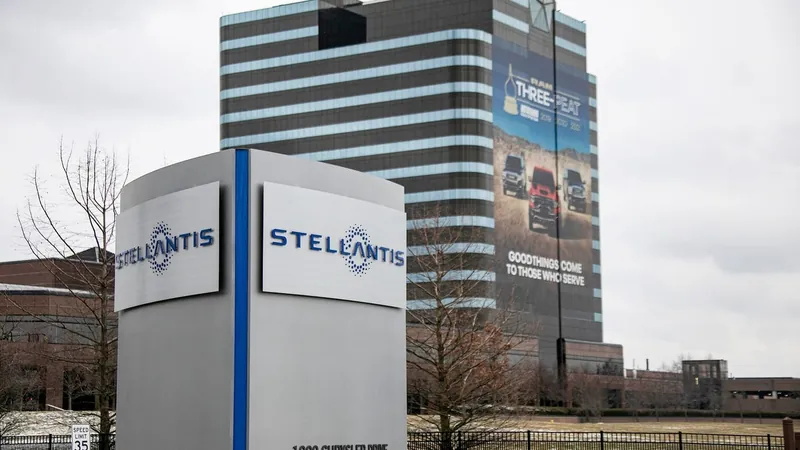
Stellantis vs. UAW: Escalating Tensions Over Jobs and Future of Belvidere Plant
2024-10-07
Author: Ting
In a dramatic standoff between the automotive giant Stellantis and the United Auto Workers (UAW), tensions are at an all-time high as the automaker rejects the union's proposal to create a 'jobs bank' for employees from the now-idled Belvidere Assembly Plant. Stellantis claims that this initiative harkens back to outdated practices that contributed to its previous bankruptcy in 2009, igniting a heated debate over the future of jobs and union rights.
Stellantis, which operates several major brands, including Jeep, Ram, and Chrysler, met with union leaders on Saturday, just one day after filing eight new lawsuits against the UAW and 23 local unions. These legal actions underscore the escalating conflict as both sides prepare for a potential national strike by UAW members.
In a bold statement, Stellantis vowed to pursue its legal battles vigorously, indicating it may seek damages amounting to tens of millions of dollars daily due to any disruptions caused by an unlawful strike. The union, however, has ramped up its rhetoric and mobilized support among its members through rallies and grievances, arguing that Stellantis has not honored its contractual commitments made in the previous year's negotiations.
Central to the discord is the future of the Belvidere plant, once expected to be a hub for producing a new midsize pickup and several other automotive projects, including an electric vehicle (EV) battery plant. However, Stellantis now describes the plant's reopening as merely delayed, a statement the UAW refutes, claiming that such delays threaten their members' jobs indefinitely.
Kevin Gotinsky, director of the Stellantis Department within the UAW, contended that the company's invocation of past jobs bank programs is a flawed comparison. 'Stellantis is perpetuating a false narrative about what the jobs bank represents today,' he stated, adding that workers are eager to resume their roles and contribute to the company's success.
The automotive landscape is rapidly evolving, particularly as the shift toward electric vehicles accelerates. As Stellantis references the volatility of the current market and the lagging adoption of EVs, industry experts warn that the union's push for a new jobs bank could complicate its objectives. Marick Masters, a labor expert from Wayne State University, described the situation as perplexing but potentially damaging for the union's long-term goals.
Stellantis' recent lawsuits are seen as an escalation in hostilities, particularly as labor tensions rise nationally—and as parts distribution centers in Los Angeles and Denver have voted to authorize strikes. UAW President Shawn Fain has countered Stellantis' accusations of bad faith, insisting that the union is fighting for worker rights and contractual commitments rather than engaging in harmful practices akin to the past.
As both sides dig in their heels, the situation raises critical questions about the future of labor relations in the auto industry. Fain has been vocal about management practices at Stellantis, declaring that poor decision-making has jeopardized the company's stability and employee livelihoods. 'Instead of pointing fingers at the workers, perhaps they should scrutinize their own management,' he argued.
As Stellantis faces not only a potential strike but also a broader challenge of navigating a market shifting toward electrification, the stakes for both the company and the UAW could not be higher. With intense scrutiny from workers, dealers, and industry observers alike, the situation remains fluid, and the outcome could reshape the future of American labor relations in the automotive sector.



 Brasil (PT)
Brasil (PT)
 Canada (EN)
Canada (EN)
 Chile (ES)
Chile (ES)
 España (ES)
España (ES)
 France (FR)
France (FR)
 Hong Kong (EN)
Hong Kong (EN)
 Italia (IT)
Italia (IT)
 日本 (JA)
日本 (JA)
 Magyarország (HU)
Magyarország (HU)
 Norge (NO)
Norge (NO)
 Polska (PL)
Polska (PL)
 Schweiz (DE)
Schweiz (DE)
 Singapore (EN)
Singapore (EN)
 Sverige (SV)
Sverige (SV)
 Suomi (FI)
Suomi (FI)
 Türkiye (TR)
Türkiye (TR)